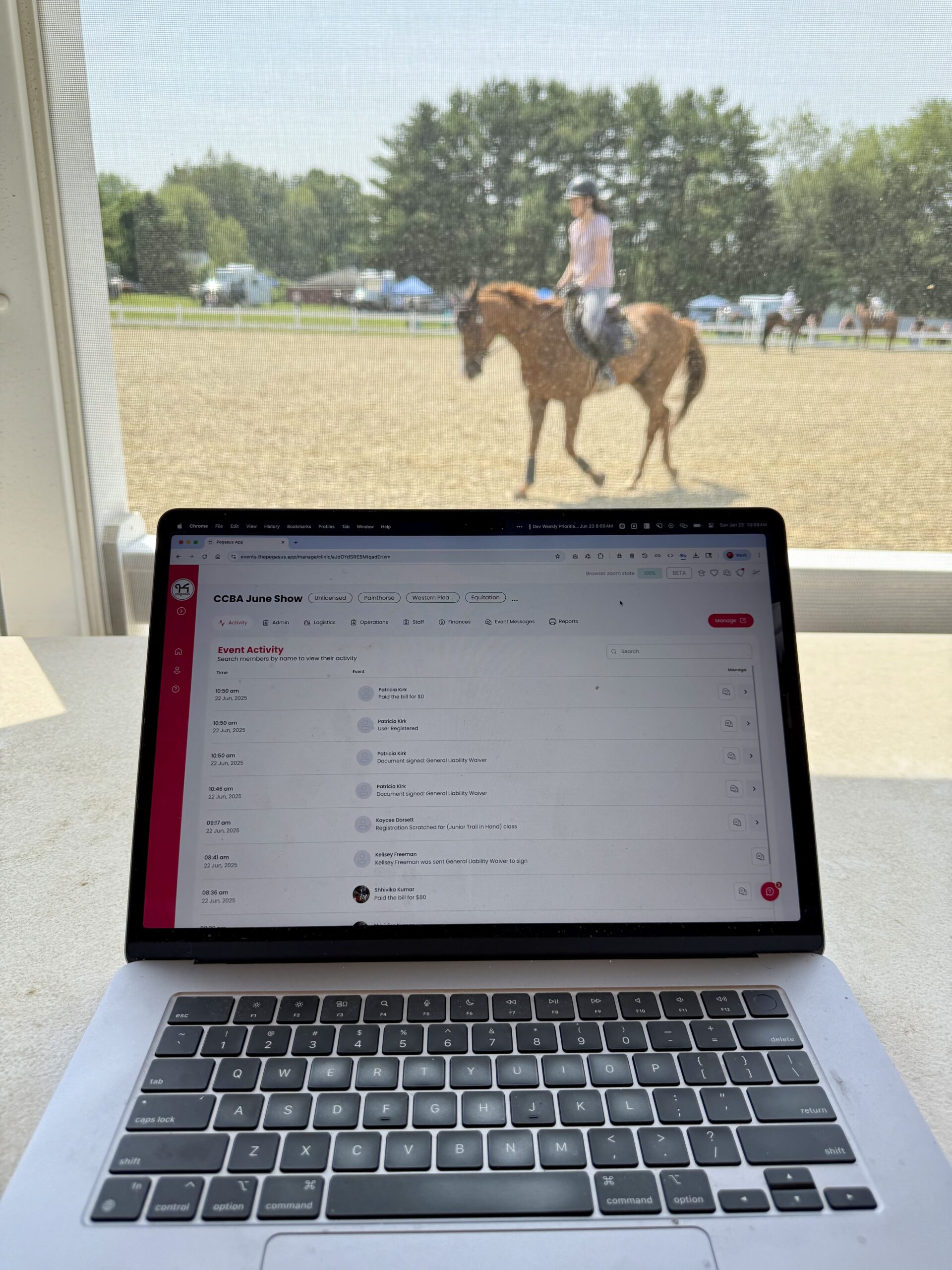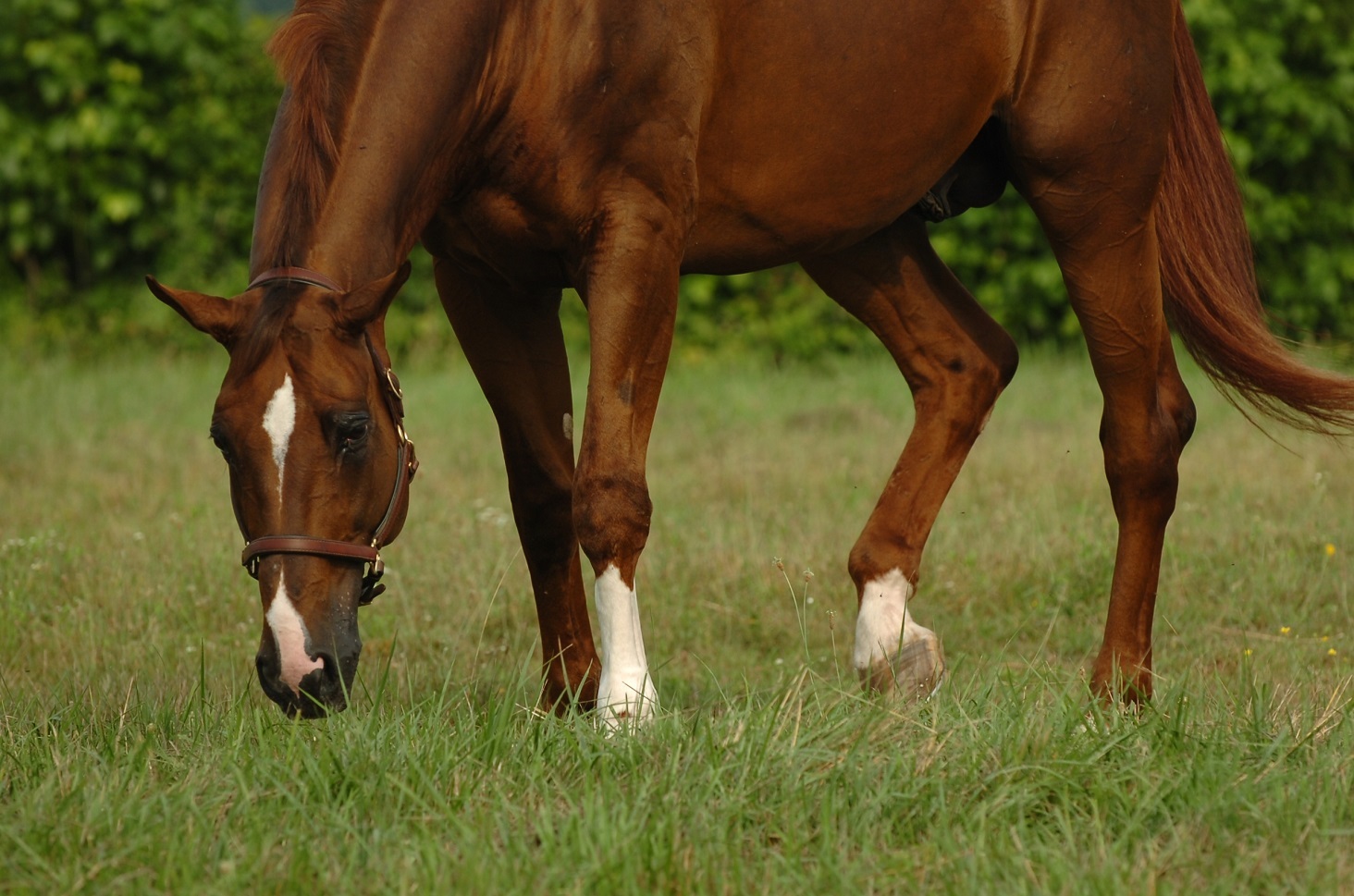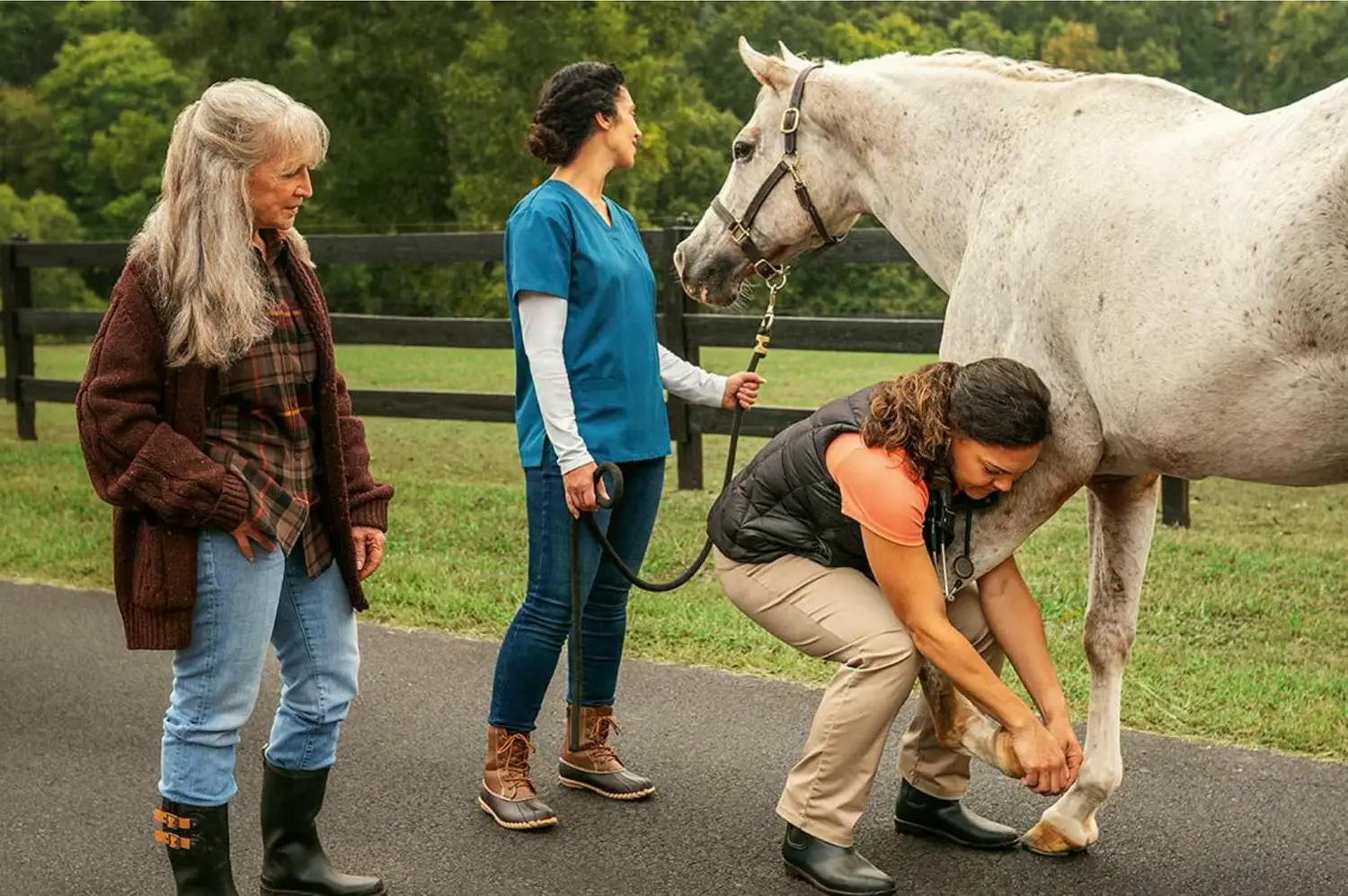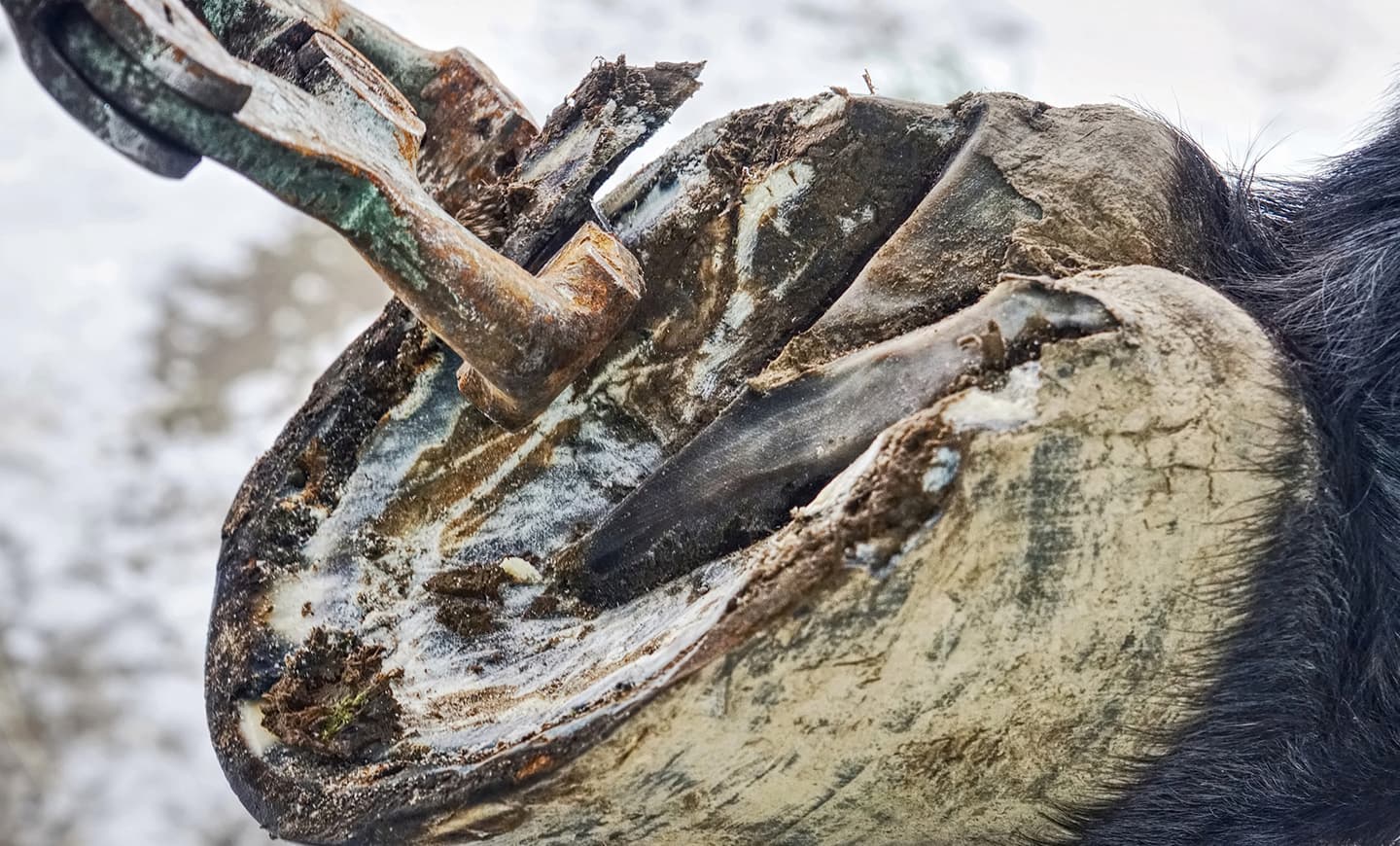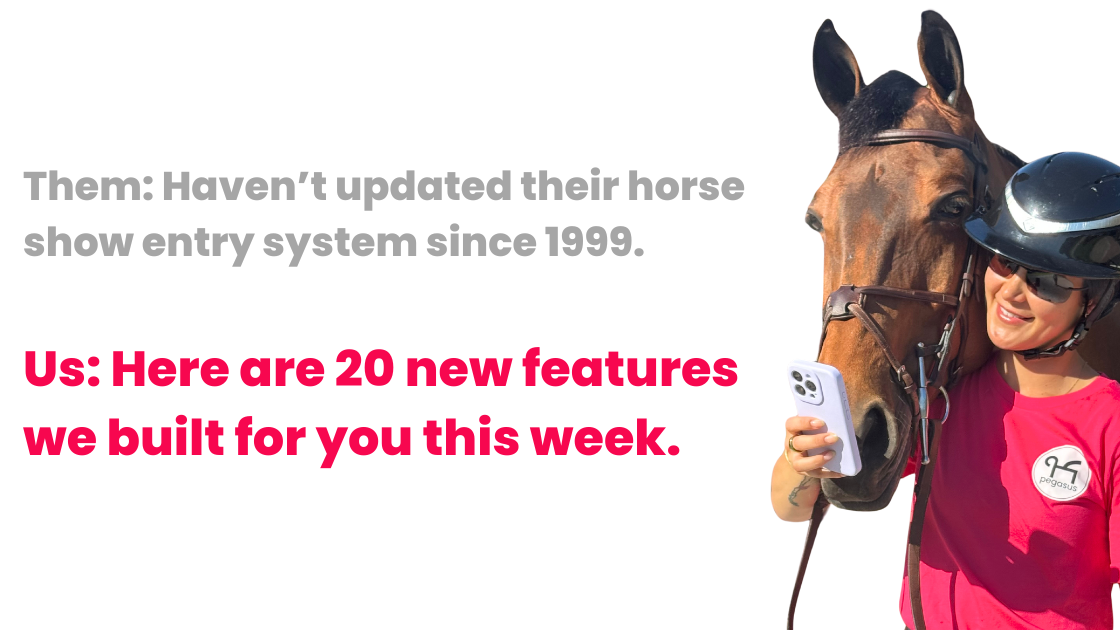Hey there, partner. This is The Oxer by Pegasus. The newsletter that takes you out of your tack room and into the global equestrian industry.
🐴 Here’s what we’ve got for you today:
- 🏠 A new report on equine sanctuaries in the U.S. is out: What it says about how our beloved breeds are being treated.
- 💸 The American Horse Council‘s Economic Impact Study is finally here: We cover the most impressive findings from the study below.
- ✈️ Continue vicariously traveling through China’s equestrian industry: Read about findings and insights we shared in our Oxer edition after the podcast came out.
- 🎬 Final Foals: Check them out after the second story of this edition.
Before we get into it, have you signed up to try out Pegasus’s beta?
If not, head to Pegasus, click “get early access,” and sign up today!

Saddle up to learn a lot in today’s edition.
⛲️ What the State of Equine Sanctuaries Looks Like Across the U.S.
- The Equine Welfare Data Collective (EWDC) has published its sixth report, revealing insights into equine welfare based on data from 2022.
- The report indicates a shift in reasons for equine intakes and outcomes, suggesting changes due to the pandemic’s aftermath.

There isn’t information suggesting why 35% of requests that were received were not fulfilled.
Yet one could imagine that it might be because the requests themselves weren’t suitable for equine sanctuaries to take on, or maybe that the equine sanctuaries themselves weren’t able to take such requests due to limited resources and capacity.
Support for feed and veterinary care remains the top assistance requested from organizations.
While the fulfillment of veterinary care needs in 2022 mirrored those of 2021, only 44% of feed assistance needs were met, a significant drop from the 94% fulfillment rate the previous year.
This reduction could be attributed to either an increase in requests or a decrease in available resources, though the exact cause remains uncertain.
The report highlights the impact of COVID-19 on horse welfare organizations and emphasizes the need for ongoing support and data collection to address the challenges facing at-risk equines. Reports from EWDC highlighted that rescues and animal control officials faced staffing challenges due to the pandemic, impacting their ability to report data effectively.
As a final note on this, the study’s organizer, the EWDC, is a program under the United Horse Collective which is also under the American Horse Council.
Which leads us to our next story.
 Some of the Best Things We Found in the Anticipated AHC Study
Some of the Best Things We Found in the Anticipated AHC Study
- Once every handful of years, the American Horse Council (AHC) publishes its highly vetted Economic Impact Study.
- The 2023 study is finally here, being the first time AHC published an economic impact study since 2017.
- Let’s look into some of the most interesting feats from the study.|
Before we get into this year’s study, it’s worth noting what the American Horse Council actually does, which President Julie Broadway gets into the nitty gritty about on The Pegasus Podcast.
Very quickly, the AHC is an organization based in Washington, D.C. that collaborates with partners throughout all equine-related industries to lobby for our interests on Capitol Hill.
Additionally, the AHC serves as a source for better understanding what all of the varying equine industries look like from a statistical perspective. It’s worth noting that the AHC partners with Innovation Group which is a firm that specializes in gathering large-scale data on industries such as ours.
The maintenance of the United States’ estimated 6.7 million horses, combined with expenditures by horse enthusiasts on events and recreational activities, significantly contributes more than $74 billion to the nation’s Gross Domestic Product.
To put this in perspective, America’s horses have a GDP of $10 billion more than the GDP of Serbia, and have a bigger GDP than tourist haven Croatia and the British region of Northern Ireland.

Horses lead to 1.3 million jobs in “direct employment”, meaning that this statistic does not count for the jobs that horses bring that aren’t exactly working with them, such as a vendor at a show.
If we were to count those “indirect” jobs, too, the total number of jobs that horses add to the economy is 2.2 million. That’s almost equivalent to the population of Miami.
One more fascinating fact from this year’s study is that almost a third of households in the U.S. contain at least one horse enthusiast.
This brings into question how “niche” horse sports are.
If you want to read all of the insights that the study has to offer, you can purchase it here on the American Horse Council‘s website.
🐴 This Week’s Final Foals
🏈 A horse predicted that Taylor Swift would win the Super Bowl, and she did.
🙀 Equestrians can love anime, too!
💻 Try Pegasus’s beta today by signing up on the form on our homepage.
📱 Follow Pegasus on Insta, TikTok, and YouTube Shorts.
Take your time to digest these stories and let us know what you think by replying.
Your bit is dirty,
The Oxer by Pegasus



